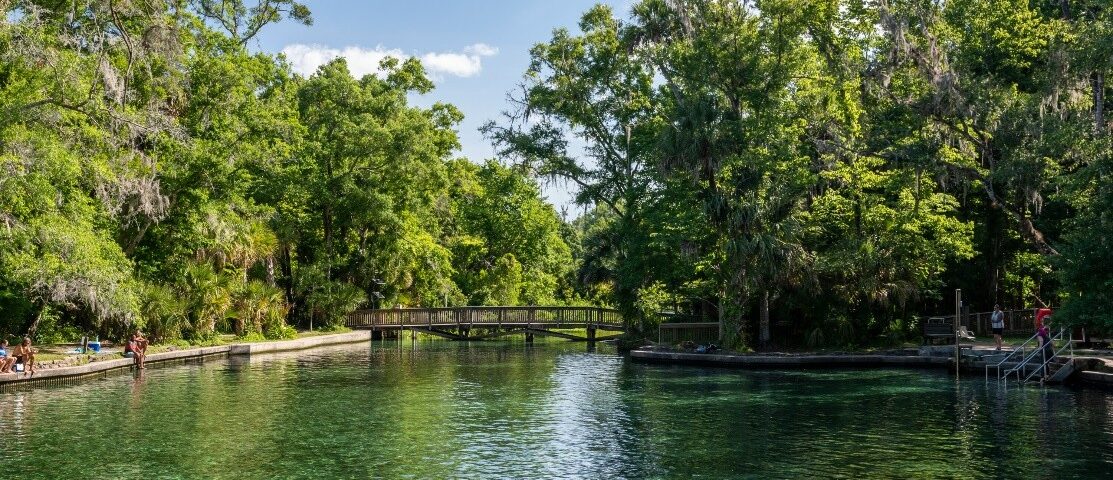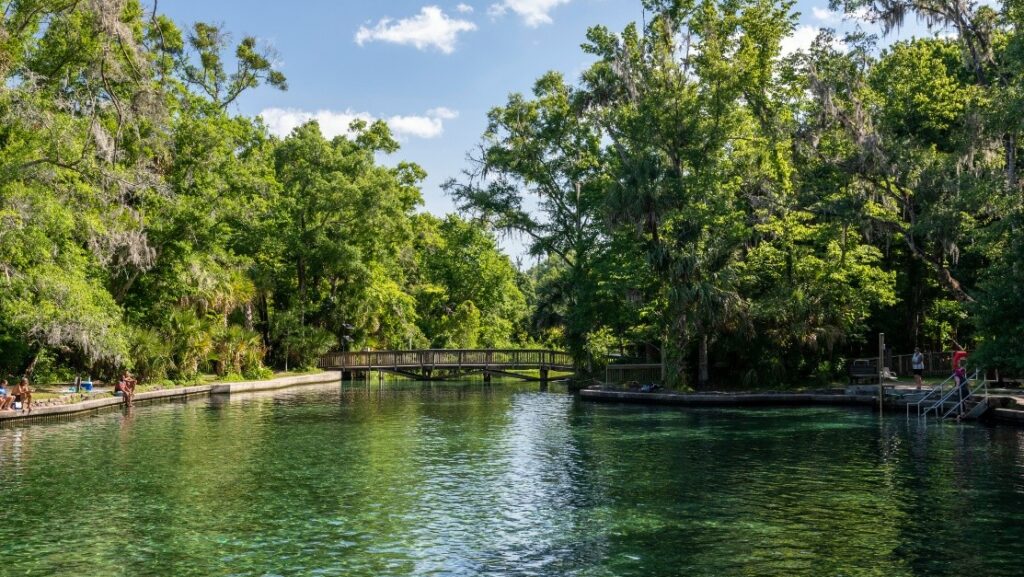District leads proactive efforts to secure central Florida’s water future


Wekiwa Springs is one of several Outstanding Florida Springs supported by the St. Johns River Water Management District’s efforts to protect water resources through science-based Minimum Flows and Levels (MFLs).
The District is advancing a wide range of science-based initiatives to help ensure a sustainable and resilient water future for central Florida’s growing communities, businesses and natural resources.
A cornerstone of this effort is the District’s ongoing work to establish and update Minimum Flows and Levels (MFLs), which are science-based thresholds designed to prevent significant harm to rivers, lakes and springs from water withdrawals. A key focus area is the Wekiva River—which is designated as both a National and Florida Scenic and Wild River—and its surrounding region, an ecologically rich system home to multiple Outstanding Florida Springs. These springs are not only part of Florida’s iconic natural beauty but also provide critical habitat and immeasurable natural, recreational, economic and inherent value. Their Outstanding Florida Spring designation affords them additional protections to support long-term conservation and restoration.
Seven existing MFLs in central Florida are being re-evaluated, and a new one is proposed for the Little Wekiva River to enhance protection of smaller springs like Palm, Sanlando and Starbuck.
These efforts are part of the Central Florida Water Initiative (CFWI), a collaborative partnership between the St. Johns River, South Florida and Southwest Florida water management districts, the Florida Department of Environmental Protection (DEP), the Florida Department of Agriculture and Consumer Services, local governments, utilities and other stakeholders. With central Florida’s population now exceeding more than 3.4 million people, coordinated regional planning is essential. The District plays a key role in developing comprehensive water supply plans that look 20 years ahead to help ensure sustainable resources for generations to come.
“Ensuring a sustainable water future requires foresight, innovation and strong partnerships,” said Assistant Executive Director Mary Ellen Winkler. “By working together and planning ahead, we’re building a resilient water supply not just for today, but for the next generation.”
To date, the District has invested $35.7 million in CFWI-area projects that collectively total $204.5 million in value, reflecting the importance of shared funding and collaboration in regional water resource management.
One promising project is the potential expansion of the Taylor Creek Reservoir in eastern Orange and Osceola counties. Constructed in the 1960s as part of the original federal Central and Southern Florida Flood Control Project, Taylor Creek Reservoir was designed to capture and hold upland stormwater before it reached the St. Johns River, reducing flood stages in the Lake Poinsett area as a flood protection measure. Today, the reservoir provides drinking water and supplies irrigation water. The proposed expansion could provide up to 54 million gallons of drinking water per day to additional utilities, strengthening regional water security through a strong public-private partnership.
The District also partners with local agricultural operations like Cherrylake in Lake County, which has completed six cost-share projects to increase irrigation efficiency, conserve water and improve water quality. These projects have resulted in more than 1.3 million gallons per day of water savings and significant reductions in nutrient runoff, demonstrating how innovative agricultural practices can benefit both the economy and the environment.
In addition to these efforts, the District continues to invest in water conservation programs and groundwater recharge projects that extend existing supplies and protect natural systems, including Florida’s iconic springs.
To find additional information about the District’s Water Supply program, please visit www.sjrwmd.com/water-supply.

